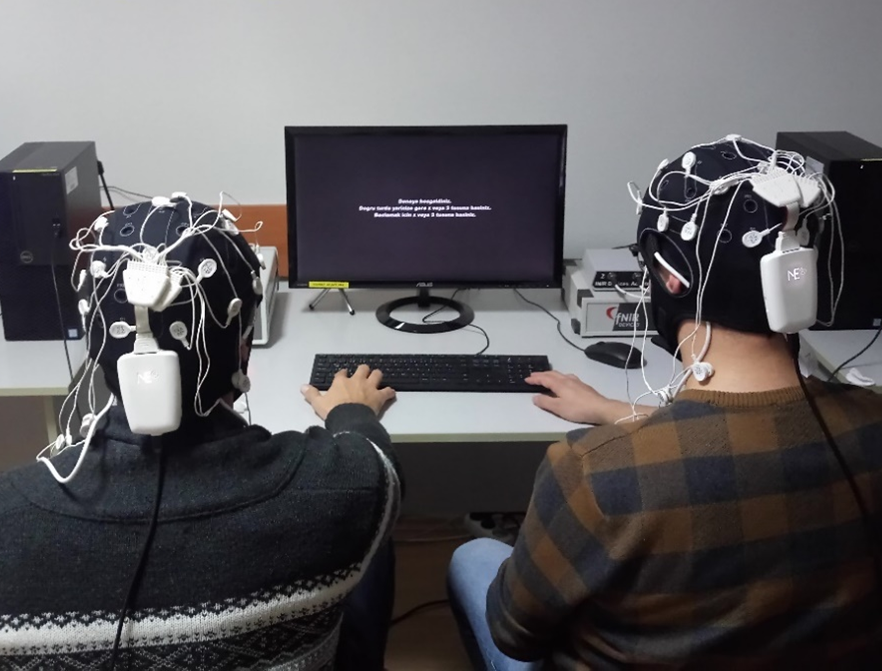Ph.D. Candidate: Kerem Alp Usal
Program: Cognitive Science
Date: 05.09.2023 / 11:00
Place: A-212
Abstract: The ability to engage in joint attention and perform joint actions is crucial for social life, and therefore an indispensable attribute of human cognition. It is common in everyday life that people need to perform an action together, which is called a joint action. Joint action requires extra effort compared to individual action, such as sharing mental representations, coordination, predicting partner’s behavior, entrainment and perception-action matching. The setting of joint action, whether it is cooperative or competitive, affects participants’ performance as well. The cognitive mechanisms underlying joint action between individuals are still under research. In this study, changes in neural activation during joint action were investigated with hyperscanning, using functional near infrared spectroscopy (fNIRS) and electroencephalography (EEG) as participants first performed the same task individually and then collaborated as a dyad. Sixty-two participants were tested in thirty-one dyads with a dual version of the n-back task. Results are in support of the social facilitation model, and neural measures including hyperscanning were successful to differentiate between individual and social task settings. Overall, this study is one of the first studies to conduct EEG and fNIRS-hyperscanning simultaneously during a complex collaboration task that brought together temporal constraints and elements of visuospatial reasoning. This provided information regarding the neural mechanism that makes it possible for humans to successfully collaborate on a time-constrained and complex task, which is a common and foundational part of social interaction.
